Born: March 17, 1930, Katowice
Died: February 17, 2020, Przesieka
| Broll Urszula Born: March 17, 1930, Katowice Died: February 17, 2020, Przesieka |
|
Polish painter, Buddhist, and one of the most creative animators of contemporary culture.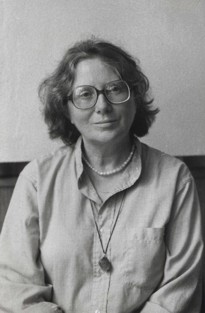
Urszula Broll was born on March 17, 1930, in Katowice, into a family of Silesian heritage where Polish and German influences intertwined. Her father, Jan Broll, came from a Polish-speaking family in Zabrze. He participated in the Silesian Uprisings and served as the head of the Wełnowiec municipality (now part of Katowice). Her mother, Katarzyna Loch, born in Berlin, came from a German-speaking Silesian family. Urszula was the youngest of their three daughters. In 1937, she began attending a Polish school in Katowice. The outbreak of the war placed the Broll family in a very difficult situation. Urszula’s father was placed on a German liquidation list, forcing him to emigrate. He returned to the country and his family only after the war. Her mother decided to send Urszula to relatives in Wroclaw so she could attend a German school. However, after a year, Urszula returned to Katowice, as she struggled with separation from her family and found it difficult to adjust to the German school. In 1945, she resumed her education at a Polish school in Katowice, graduating in 1949 from a girls’ high school on 3 Maja Street. The school’s humanities-focused curriculum and her clearly defined interests allowed her to make a conscious choice regarding her studies. She successfully passed entrance exams to the Krakow Academy of Fine Arts (Katowice branch) and began studying graphic propaganda and poster design. Her instructors included Prof. Leon Dołżycki (a member of the “Kapists”) in painting, Prof. Bogusław Górecki in poster design, and Prof. Aleksander Rak in artistic graphics and drawing. The curriculum and the atmosphere of those times did not encourage creative freedom. The young artist often viewed various restrictions with reluctance and, at times, open resistance, all while searching for her own paths of artistic development.
Disagreement with this reality was also manifested in the search for contacts with people who thought the same. Almost from the beginning of her studies, Urszula befriended Klaudiusz Jędrusik, who was two years ahead of her, and people from his year:
In the early 1950s, Urszula Broll met Konrad Swinarski. The future eminent theatre director was studying in Łódź under Władysław Strzemiński. Swinarski’s intellectual potential and his attachment to his native Silesia brought the two artists closer. Through Broll, Swinarski met her friends and shared with them excerpts from Strzemiński’s Theory of Vision. This work inspired them and encouraged an in-depth exploration of the development of art, visual language, and the practical application of the ideas contained within it. It was a form of private study, a kind of self-education, which provided a solid foundation for developing their own artistic vision and personal preferences. In August 1953, Urszula Broll participated in the first exhibition of the group of friends—together with Zdzisław Biliński, Klaudiusz Jędrusik, Walter Napieralski, Tadeusz Ślimakowski, Zdzisław Stanek, Waldemar Świerzy, Konrad Swinarski, and Sylwester Wieczorek—at the latter’s house in Brada. This exhibition led to the formation of the St-53 group (Świerzy, Napieralski, and Wieczorek did not join), considered the first post-war Polish art collective. At Swinarski’s suggestion, who advised expanding the group to include poets, journalists, and architects, new members joined later: Krystyna Broll (a poet), Irena Bąk (a textile artist), Stefan Gaida, Hilary Krzysztofiak, and Mara (Maria) Obremba (a university colleague and future wife of Sławomir Mrożek). In June 1954, the group held its second unofficial exhibition with the same members at Maria Obremba’s apartment on Warszawska Street in Katowice. This exhibition also included drawings by Strzemiński brought from Łódź. In 1955, Urszula Broll graduated with honors. She continued to actively participate in the work of the St-53, group and took part in its first official exhibition, which was held at the Creative Work Club at 37 Warszawska Street in Stalinogród (the name for Katowice at the time) in May 1956. The exhibition was preceded by a two-day meeting of the group at Urszula Broll’s home on Klonowa Street, attended by Kunka and Krygier from Łódź and Bożena Kowalska from Warsaw.
After the exhibition opened, Julian Przyboś, Tadeusz Kantor, and Andrzej Wajda came for a multi-day meeting with the group. The work of the St-53 group attracted attention and was soon shown in Kraków and in Warsaw at the “Crooked Circle" Gallery in December 1956. Julian Przyboś commented on this presentation:
In 1957, an exhibition in Poznań showcased the work of three main creative groups: St-53, R-55 and 55, summarising their achievements. The St-53 group was represented by Irena Bąk, Urszula Broll, Stefan Gaida, Maria Obremba, Zdzisław Stanek, and Tadeusz Ślimakowski. In March, the exhibition was presented at the BWA (Art Exhibitions Bureau) in Szczecin and in April in Katowice. At the end of 1957, Broll participated in the Second Exhibition of Modern Art in Warsaw, where she displayed a series of oil paintings titled Landscapes.
In June 1958, Urszula Broll married Andrzej Urbanowicz, whom she had met in 1956 at the St-53 group exhibition in Katowice. At the time, Broll had already graduated, while Urbanowicz was preparing to begin his studies at the Academy. The wedding took place in Kraków, with Krystyna Broll—the artist’s sister and a poet—and Józef Szajna, a young stage designer from the People’s Theatre in Nowa Huta, serving as witnesses. The couple briefly lived in Urszula’s family home on Klonowa Street. In March 1959, Broll exhibited her paintings at the “Crooked Circle” Gallery n Warsaw, alongside Maria Obremba. The gallery, run by Marian Bogusz, was of exceptional importance to the creative community across Poland, as it was the only venue open to independent art. At the gallery, Broll presented oil paintings from the Transformations series. As Janusz Zagrodzki wrote:
She also participated in the Third Exhibition of Modern Art at the Zachęta Gallery in Warsaw. At the beginning of 1960, Broll and Urbanowicz moved to a studio on Piastowska Street. Andrzej Urbanowicz described the location:
Urszula Broll’s artistic career developed rapidly. She exhibited her paintings in Sweden and participated in the Polish Artistic Work on the 15th Anniversary of the People's Republic of Poland exhibition in Warsaw (1962), held at the National Museum, The works for this prestigious exhibition were selected by a commission chaired by Alfred Lenica. In 1963, her work was featured in a solo exhibition at the Bureau of Artistic Exhibitions (BWA) in Katowice. This exhibition included 19 oil paintings from the Aliquotsseries, about which Alfred Ligocki wrote:
The same collection was later presented at the Krzysztofory” Gallery of the Krakow Group in Kraków. As Janusz Zagrodzki described:
Broll’s participation in the Confrontations 1963 exhibition at the“Crooked Circle” Gallery in Warsaw—and her meeting with Marian Tchorek and Jerzy Prokopiuk—was significant for the creative and spiritual development of both Urszula and Andrzej Urbanowicz.
Their participation in the First International Koszalin Open-Air Studio in Osieki (1963 and 1964) was also an important milestone. Broll recalled the experience:
At the EL Gallery in Elbląg, Gerard Kwiatkowski (Gerhard Jürgen Blum Kwiatkowski) presented the First Parade of Contemporary Art in October 1964, featuring artists including Urszula Broll, Andrzej Urbanowicz, and Hilary Krzysztofiak. The year 1965 marked a period of new explorations. The Urbanowiczes, later joined by Henryk Waniek, began a publishing initiative in their studio. Their focus was on significant works of world culture that had not been published in Poland and were unlikely to be released in the near future. These included books by Carl Gustav Jung, Mircea Eliade, The Tibetan Book of the Dead, and others. The translations were done by the artists themselves, with support from Antoni Halor, Zygmunt Stuchlik, Jerzy Prokopiuk, and Tadeusz Sławek. Initially, the books were typed in a few copies, but later, they utilised an underground printing press. Around 1975, their focus shifted toward Buddhism. At the time, their studio existed outside official cultural structures. It became a laboratory for diverse experiences and a space for the free exchange of ideas and artistic-exploratory pursuits. On November 23, 1965, Urszula and Andrzej Urbanowicz’s son, Roger, was born. He would later graduate from Columbia University in New York and, like his parents, become a Buddhist. The arrival of their child naturally limited Urszula’s artistic activity but did not bring it to an end. In December 1967, the Oneiron, group was founded in the Urbanowiczes' studio. It emerged from meetings of five like-minded friends: Antoni Halor, Zygmunt Stuchlik, Henryk Waniek, and the Urbanowiczes. Oneiron functioned as a discussion circle where topics of philosophy, psychology, and art were explored, alongside spiritual and mystical investigations. It was a unique studio for visual and mental experiments, dedicated to uncovering personality mechanisms and the nature of dreams. Their fascination with esoteric knowledge led them to explore magic and alchemy, while their interest in Eastern philosophy and religion deepened. Initially inspired by Carl Jung's psychology, Urszula Broll sought artistic expressions of her consciousness and alternative perceptions of the external world. Her artistic interests increasingly reflected a spiritual dimension. One of the group’s major collaborative works was the Black Cards, which were preceded by the development of the Lexicon of Symbols. The group's activities continued until 1971. In October 1969, the Second Katowice Meeting of Artists and Art Theorists took place at a club on Warszawska Street. It was accompanied by an exhibition titled Encounters at the Katowice Gallery, showcasing individual artists from Silesia, including Urszula Broll. A more private exhibition was also held at the Piastowska studio for a closed group of participants. Attendees included members of the Oneiron group as well as Jerzy Illg, Zdzisław Stanek, Jerzy Ludwiński, Stefan Morawski, Wojciech Skrodzki, Jerzy Lewczyński, Aleksander Wojciechowski, Zofia Rydet, Andrzej Kostołowski, Jan Karwot, Mariusz Tchorek, and Stanisław Fijałkowski. The exhibition featured Lexicon of Symbols and a specially prepared ritual performance created by Waniek and Urbanowicz. Documentation of the event included a handmade poster (produced in several dozen copies) with a photograph of the attic and artists' signatures on the exterior, while the interior was collaged with reproductions of works and handwritten notes by the authors. This exhibition, accessible only to an initiated audience, operated outside official channels and presented works that engaged with symbolic-magic and surreal art. In April 1970, a small exhibition of Urszula Broll’s paintings took place at the Contemporary Gallery in Warsaw. She displayed watercolours that, as Janusz Bogucki described in the exhibition catalog:
A separate part of the exhibition was the presentation of Black Cards by the Oneiron group. In June, a solo exhibition took place at the BWA in Katowice, where the artist showcased, for the first time on such a large scale, her watercolours and drawings from 1967–1970. Broll’s mandalas were a novelty and a great surprise to the audience. The exhibition catalog included a text by Andrzej Urbanowicz titled Who Is Allowed to Paint, which sparked much controversy. Years later, the author commented on it as follows:
To this day, this interpretation remains accurate, still sounding fresh and aligning with Urszula Broll’s views on art. The 1970s were a time of working on geometric representations and searching for her own artistic language and forms of expression, closely related to Far Eastern mandalas. The results of these explorations were shown in Zakopane at the 6th March Salon (1971) in the "Pegasus" Gallery. Shortly after, she participated in the group exhibition Dreams, Phantasmagorias, Visions at the "Prism" Gallery of the Association of Polish Artists and Designers (ZPAP) in Kraków. The exhibition’s curator, Jacek Waltoś, wanted to highlight trends in Polish art, emphasising:
The exhibition particularly emphasised the metaphorical current. Urbanowicz’s presence was also highlighted at the New Phenomena in Polish Art 1960–1970 exhibition during the Złote Grono '71 event in Zielona Góra. The exhibition’s curators, Janusz Bogucki and Zbigniew Dłubak, invited them, recognising that they had enriched and diversified the new figuration movement. [15] The 1970s also marked the beginning of U. Broll and A. Urbanowicz’s interest in Buddhism. They worked on translating and publishing two books by P. Kapleau in Polish: The Three Pillars of Zen and The Wheel of Death. Those involved in the work included U. Broll, J. Korbiel, G. Leszczyńska, and H. Waniek. Andrzej coordinated and publicised these efforts, wrote the foreword, and organised Zen practices and other esoteric initiatives. In 1974, the first issue of the first Buddhist periodical in the Polish People’s Republic (PRL) appeared - Droga (later Droga Zen) Urszula and Andrzej Urbanowicz were listed as publishers of the first issues, with an address on Piastowska Street. Collaborators on these publications included Henryk Waniek, Tadeusz Sławek, Jerzy Illg, Stanisław Kasprzyk, and others. In 1974, their paths first led them to Lower Silesia, where they participated in the group exhibition Dreams, Myths, Initiations at the Art Exhibitions Bureau (BWA) in Kłodzko, alongside Z. Beksiński, T. Brzozowski, S. Fijałkowski, T. Makowski, E. Rosenstein, P. Trybalski, A. Urbanowicz, H. Waniek, and others. They sought a place for creative work and spiritual development outside of Katowice. In 1971, A. Urbanowicz purchased a cottage on Kamieńczyk Hill in Mąchocice Kapitulne near Masłów in the Kielce region. Kamieńczyk became an increasingly important retreat—Urbanowicz’s summer home in the Świętokrzyskie Mountains. There, and in a neighbouring house under construction owned by Janusz Korbel, a group of friends aimed to create a space for spiritual growth in accordance with Zen practice and the teachings of Philip Kapleau. Guests would stay for multi-day workshops focused on group zazen practice. The year 1975 was significant for the Urbanowiczs and others, as P. Kapleau visited Piastowska Street to conduct the first Zen workshop and a four-day session (intensive group Zen practice) in Poland. Twenty-two people participated, including Urszula Broll, Andrzej Urbanowicz, Henryk Waniek, Jacek Ostaszewski, Małgorzata Ostaszewska, Tomasz Hołuj, Włodzimierz Nowak (Nyogen Nowak), and others. Following this meeting, the founding assembly of the Zen Circle took place, formally establishing the first Buddhist group in Poland. Meanwhile, intensive work continued on building a Zen practice house at Kamieńczyk. In 1977, another session was held there, led by Toni Packer, a student of Kapleau at the time. In 1978, Urszula and Andrzej Urbanowicz divorced. After the divorce, Andrzej moved to the United States, where he started a new family and spent several years. Urszula remained in Katowice, raising their son, managing the studio, and focusing on her creative work. In 1979, she held a solo exhibition of drawings and watercolours at the Library Gallery in Randolph, New Jersey (USA), where W. Skrodzki commented:
Over time, spiritual practice became increasingly important in Urszula Broll’s life. In 1983, she left Katowice, leaving the studio to a group of Philip Kapleau’s students. She moved with her son and her partner, Henryk Smagacz—a painter and translator of psychological and spiritual literature—to Przesieka near Jelenia Góra, following the Buddhist community associated with Philip Kapleau, which had taken temporary possession of the Old Mill in Przesieka. The community included Małgorzata and Jacek Ostaszewski, Tomasz Hołuj, and Joanna Lasota. Urszula and Henryk settled in a small house on Słoneczna Street, surrounded by a beautiful wild garden.
In 1983, due to disillusionment with their teacher and internal conflicts, many people, including Broll and Smagacz, left the community. Their spiritual interests shifted toward Tibetan Buddhism. Over time, the Kapleau community left Przesieka, while Broll remained connected to the Karma Kagyu school of Tibetan Buddhism for the rest of her life. The first presentation of Urszula Broll’s work in the Jelenia Góra Valley took place in 1984. It was a solo exhibition at the Contemporary Art Gallery of the MPiK Club (50 Town Hall Square) in Jelenia Góra, where she showcased watercolours, drawings, and oil landscapes from 1968 to 1984. The exhibition catalog, edited by Henryk Szymczak, included texts by Wojciech Skrodzki, Henryk Waniek, and Zdzisław Beksiński. In 1987, at the Art Exhibitions Bureau (BWA) in Kłodzko, she presented her watercolours and drawings. Commenting on these works, J. Markiewicz wrote:
In 1988, Broll participated in the 6th Presentation of the Jelenia Góra Artistic Community at the BWA w Jeleniej Górze (wówczas przy ul. 15 Grudnia 8). Od tej wystawy zaczyna się jej współpraca z jeleniogórskim BWA, involving her participation in the gallery's exhibition and promotional programs, as well as in collective exhibitions of local artists presented abroad (in Homel, Valkeakoski, Aachen, Landau, and Monschau). Despite living far from major artistic centres, she took part in significant exhibitions. In 1989, she participated in Meditation and Art in Kraków alongside J. Kraupe-Świderska, R. Kudliński, and T. C. Wiktor. She also held a solo exhibition during the Chamber Music Festival at the Upper Silesian Cultural Centre in Katowicewhere she presented a collection of watercolours and drawings. In 1995, she took part in the Polish Surrealists exhibition at the Municipal Art Gallery in Częstochowa, which showcased works by 80 artists significant to this artistic movement. In 1996, Urszula Broll, Nyogen Nowak, and Ewa Hadydoń exhibited together in Tokyo and Sendai, Japan. She displayed her latest geometric watercolours and drawings in Jelenia Góra—at the "Promotion" Gallery of the Cultural Center and in 1997 at the BWA – where she exhibited a selection of works from 1968 to 1996. This exhibition was accompanied by a catalog featuring a text by Henryk Waniek and a biographical film about the artist, directed by Piotr Lipiński and produced by Jelenia Góra TV AVAL in 1993. Concurrently, she held a solo exhibition of watercolours and drawings at the "Live" Gallery at Polish Radio in Katowice, with texts for the exhibition catalog written by Zdzisław Beksiński and Wojciech Skrodzki. n 1998, at the Manggha Center for Japanese Art and Technology n Kraków, Urszula Broll, along with Nyogen Nowak (Zen painting) and Ewa Hadydoń (esoteric painting), presented the exhibition Zen Dust. In the exhibition catalog, Broll explained the origins of her mystical watercolours:
One project that strengthened Broll’s connection to Lower Silesia was the exhibition Magnificent Landscape: Artistic Colonies in the Karkonosze Mountains in the 20th Century. This extensive presentation of pre-war and contemporary art related to the Karkonosze region was first shown at the Regional Museum in Jelenia Góra (historical section) and the BWA (contemporary section) before traveling to Wrocław and Berlin in 1999 and, the following year, to Ratingen, Hoesel, Görlitz, Alfeld, and Harzburg in Germany. A richly illustrated bilingual book (400 pages, A4 format, print run of 1,000 copies), edited by Klaus Bździach, was published in conjunction with the exhibition. It was produced by the Gesellschaft für interregionalen Kulturaustausch e.V., Berlin, and the Regional Museum in Jelenia Góra. The publication devoted considerable attention to contemporary artists living in the Jelenia Góra Valley, including Urszula Broll and Henryk Smagacz. The text on visual artists of the 1980s and 1990s and their "return" to the Karkonosze region was written by Janina Hobgarska and Joanna Kozioł (now Mielech), who also curated the contemporary section of the exhibition. This project was a major German-Polish collaboration involving many people and institutions and remains the most comprehensive compendium on the artistic culture of the Karkonosze region in the past century. Another significant project was Visionaries of the End of the Century a collective exhibition organised by the Museum of the Lubusz Land in Zielona Góra, featuring works by U. Broll, Z. Beksiński, J. Gaj, K. Skórczewski, A. Strumiłło, J. Waltoś, and H. Waniek. Exhibition curator Irena Klisowska-Filipczuk invited artists whose:
In September 2000, a project titled Around the Great Mountain was organised, showcasing the art of the territory surrounding Śnieżka from both pre-war and contemporary periods. Urszula Broll presented new works at this exhibition—metaphorical oil paintings. The premiere took place at the BWA in Jelenia Góra (contemporary section) and the Karkonosze Museum in Jelenia Góra (historical section) and was later shown in 2001 in Zabrze, Herrnhut (Germany), and Vrchlabi (Czech Republic). An album accompanied the project, featuring texts by Professor Jacek Kolbuszewski, Dr. Piotr Łukaszewicz, Miloslav Bartoš, Józef Liebersbach, Joanna Mielech, Henryk Waniek, and reproductions of the artists' works. The exhibition was curated by Janina Hobgarska. The contemporary section featured works by 35 borderland artists (13 from Poland, 10 from the Czech Republic, and 8 from Germany). As part of the project, a film titled Artists in the Karkonosze was produced, featuring Urszula Broll, and directed by Jolanta Ciesielska, Witosław Czerwonka, and Wojciech Zamiera. While increasingly connecting with the Jelenia Góra artistic community, Broll also maintained ties with the Katowice art scene. This was evidenced by her participation in a 2001 group exhibition of members of the Katowice branch of the Association of Polish Artists and Designers (ZPAP) at the local BWA, where she exhibited mandalas from 1999. In 2003, she took part in the 5th Triennale of Sacred Art at the Municipal Gallery in Częstochowa. The exhibition also traveled to Sopot, Elbląg, Legnica, Wałbrzych (at local art galleries), and the Academy of Fine Arts Museum in Wrocław. The theme of the Triennale was Towards the Civilisation of Life, and participants were nominated by members of the Program Council. Invited by Andrzej Saj, the editor-in-chief of the Format art magazine, Broll presented her geometric watercolours from the 1990s. The work of the St-53 group attracted the interest of researchers studying the post-war Silesian avant-garde, as they explored its significance, innovative approach to the legacy of the first avant-garde, and reinterpretation of its achievements. This interest culminated in the monographic exhibition St-53: Creators, Attitudes, Traces at the Museum of the History of Katowice.. The exhibition included works by the group's members, with a substantial selection of Broll’s pieces. The accompanying 156-page catalog featured texts by Aleksandra Krypczyk, Joanna Jędrusik, Urszula Broll, poems by Krystyna Broll-Jarecka, archival photographs, and numerous reproductions, including 22 works by Broll from 1953–1964. At the same time, the project Katowice Artistic Underground after 1953 was initiated by Andrzej Urbanowicz and Henryk Waniek. Its main exhibition was held at the BWA in Katowice, showcasing a broad selection of works—from the St-53 group to the Arkat and Oneiron collectives, independent artists, and art created during martial law up to the present day. It was a panoramic view of Silesian art that largely functioned outside official structures. The exhibition was curated by Professor Janusz Zagrodzki and coincided with the 50th anniversary of the St-53 group's founding. Urszula Broll’s work was prominently displayed, and the BWAin Katowice published a catalog for the exhibition. Between these Upper and Lower Silesian presentations, the Ephemeral Landscapes exhibition took place in Monschau, Germany, where Broll, alongside Teresa Kępowicz and Paweł Trybalski, exhibited imaginative landscapes in the form of watercolours and drawings. Joanna Mielech wrote a text about Broll’s work for the exhibition catalog. The exhibition, organised in 2004 by the BWAin Jelenia Góra and the Aachen district, further solidified Broll’s international presence. That same year, the “Time Gallery”in Będzin hosted an exhibition titled Urszula Broll: Painting (1950s and 1960s). It featured 22 oil paintings reflecting the artist’s interests at the time (Cubist works, industrial landscapes, tachist compositions) and 34 watercolours (early abstractions and geometric compositions from the 1960s). The exhibition catalog included illustrations of 33 works and texts by Janusz Zagrodzki and Henryk Waniek. The exhibition later moved to the “Nautilus” Antiquarian Salon in Kraków. In 2005, marking 50 years since she graduated, the BWA in Jelenia Góra organised a retrospective of Broll’s entire artistic output. This joint venture between the BWA in Jelenia Góra and Katowice was part of the Lower Silesian Art Festival, organised by the Centre for Culture and Art in Wrocław. Curated by Janusz Zagrodzki, the exhibition premiered at the BWA in Jelenia Góra. It was accompanied by a catalog edited by Janina Hobgarska and a celebratory event attended by friends such as Henryk Waniek, Teresa Biel-Lutosławska, Mieczysław Litwiński, and other local artists. The exhibition also traveled to Katowice, Legnica, and Wałbrzych. In 2009, Wojciech Skrodzki’s book Visionaries and Masters (published by Towarzystwo Więź, Warsaw) was released, compiling essays on prominent Polish visionary artists. It included a chapter on Urszula Broll titled Reading the World, where the author wrote:
In 2010, Broll’s peaceful life—rooted in spiritual practice, the study of esoteric literature, a deep connection with nature, and her beloved cats—was disrupted by a cancer diagnosis, which would affect her for the next decade. In 2011, Andrzej Urbanowicz passed away while visiting friends in Szklarska Poręba, where a Buddhist farewell ceremony was held in the presence of Urszula, their son Roger, Małgorzata Borowska-Urbanowicz (Urbanowicz’s last wife), and close friends. Despite their divorce, Broll and Urbanowicz remained connected through friendship, shared artistic values, and family ties.Although her illness slowed her artistic production, Broll continued to create—albeit less frequently and in smaller formats, mostly on paper. She remained active in the local art scene, participating in exhibitions such as those organised by the New Mill – Artists’ Colony, association, which aimed to revive the tradition of Karkonosze artists' colonies. Her works won the Grand Prix of the exhibition, leading to their acquisition by the Karkonosze Museum’s regional painting collection. Reflecting on her creative process, she wrote:
The exhibition was presented at the House of Carl and Gerhart Hauptmann in Szklarska Poręba, a branch of the Karkonosze Museum. Collaboration with Nowym Młyn also resulted in the Polish-German project Between the Poles. Polish Artistic Colonies nat the Biennale of Film and Art in Worpswede (Germany). It focused on the tradition of artistic colonies and their contemporary equivalents. The Polish side was represented by colonies from Kazimierz Dolny, Zakopane, and Szklarska Poręba. Urszula Broll showcased several geometric watercolours there. A presentation of the Between the Poles , exhibition section related to the Karkonosze region took place in 2013 at the House of Carl and Gerhart Hauptmann in Szklarska Poręba. This project continued at the European Festival of Artistic Colonies in Kazimierz Dolny, where curator Bożena Danielska presented the works of nine artists from the Jelenia Góra Valley in a bilingual exhibition catalog titled Where There Is More Art Than World. Contemporary Creators of Artistic Colonies, , which dedicated significant space to the life and work of Urszula Broll. In 2014, the artist received the "Meritorious for Polish Culture" badge awarded by the Minister of Culture and National Heritage. In 2015, the exhibition Urszula Broll – Andrzej Urbanowicz. Dangerous Liaisons was organised by the Katowice – City of Gardens Cultural Institution and the Museum of the History of Katowice, featuring works from their own collections, as well as from the National Museum in Warsaw, the Silesian Museumn Katowice, the Upper Silesian Museum in Bytom, and private collections. An extensive catalog accompanied the exhibition. The curators were Ewelina Krzeszowska and Małgorzata Borowska-Urbanowicz, with texts contributed by Prof. Janusz Zagrodzki, Henryk Waniek, and Villqist (Jarosław Świerszcz), including a substantial selection of works by both artists. In the same year, at the "Piekary" Gallery in Poznań, Cezary Pieczyński opened the exhibition Modern Women, featuring Urszula Broll alongside Janina Kraupe-Świderska, Maria Ewa Łunkiewicz-Rogojska, Arika Madeyska, Jadwiga Maziarska, Teresa Pągowska, Erna Rosenstein, Teresa Rudowicz, Maria Stangret, and Teresa Tyszkiewicz. The organisers emphasised the profound influence of these women on the development of modern art, their creative independence, bold choices, and their significant position in the art world. Urszula Broll was presented from a broader, more universal perspective, highlighting the originality and importance of her work to Polish art. A significant chapter in Broll’s artistic biography was her participation in the collective exhibition The Shadow of Ink. Far Eastern Inspirations in Polish Art at the Museum of Asia and the Pacific This exhibition showcased works by Polish avant-garde classics who had been active for over half a century, including Urszula Broll, Jerzy Jaworowski, Koji Kamoji, Prof. Jan Berdyszak, Tadeusz Kulisiewicz, Jerzy Stajuda, and Prof. Andrzej Strumiłło. Their artistic journeys paralleled a path of inner spiritual development. The exhibition also featured works by later generations of artists connected with Far Eastern culture. Urszula Broll presented several works from different periods of her career, mainly geometric watercolours. In 2016, the UUrszula Broll – Painting exhibition, prepared by the BWA Gallery in Jelenia Góra, was displayed in the gallery’s space. The exhibition catalog included 20 reproductions of her works, most of which were watercolours created in the early 21st century, with texts written by Joanna Mielech and Janina Hobgarska. The exhibition was accompanied by a film made by Aleka Polis during a visit to Broll’s studio. TBroll's work was also part of the Silesia Art Biennale (2016 )an artistic and research project conducted by the Centre for Culture and Art in Wrocław, focusing on artists from Lower Silesia. Photographers, filmmakers, and radio journalists documented the artists’ projects and personal approaches, creating a unique map of the region’s creative community. Meanwhile, researchers from the Institute of Cultural Studies at the University of Wrocław conducted a parallel study called Lower Silesia in Creation: Spaces of Culture, analysing and evaluating the region’s artistic output from a socio-cultural perspective. As part of this initiative, an interview was conducted with Urszula Broll, and photographic and film documentation of her life and work was made. A radio report was produced, and her works were included in the exhibition Local Identity and Community Awareness at the Lower Silesian Centre for Photography "Domek Romański" in Wroclaw. A book and a symposium under the same title were also produced, with Urszula Broll’s contribution prominently featured. The project’s lead curator was Andrzej Saj. In 2017, Broll's work was showcased in the Art Elevator exhibition, organised by the Municipal Gallery in Wroclaw in cooperation with the House of Carl and Gerhart Hauptmann in Szklarska Poręba. The exhibition included 14 artists from the Jelenia Góra Valley, with Broll presenting 13 geometric watercolours, drawings, and landscapes. The catalog contained texts by Mirosław Jasiński, Joanna Mielech, Marcin Harlender, and Przemysław Wiater, discussing the artists' relationship with the landscape, historical artistic colonies, and contemporary equivalents. Mirosław Jasiński curated the exhibition. The final collaborative project was Now is Here. 40/40, a group presentation celebrating the 40th anniversary of BWA Jelenia Góra in 2017. Urszula Broll was among the 40 invited artists, with her works included in the exhibition catalog. A radio report titled Urszula was broadcast on Polish Radio on December 26, 2017. The report’s author, Dorota Jaśkiewicz-Łebek, received the title of Radio Reporter of the Year (2018), the "Melchior" statuette, and a cash prize. The last exhibition featuring Broll took place in June 2019 at the Sudeten Centre for Culture and Art in Szklarska Poręba, presenting 50 works from various stages of her career. The exhibition included a meeting with the artist and a poetry and music evening featuring local creators. That same year, Urszula Broll's work caught the attention of the Katarzyna Kozyra Foundation Foundation in Warsaw, which was running a program to restore female artists—either unjustly forgotten or insufficiently recognised—to the artistic mainstream. The preparation for the exhibition coincided with the worsening of Urszula's cancer. The selection of works was entrusted to Katarzyna Kucharska and Janina Hobgarska, with Henryk Smagacz providing access to the works and assistance in their review. The exhibition and catalog were organised by the Foundation and the Królikarnia Sculpture Museum– a branch of theNational Museum in Warsaw. The exhibition's opening was scheduled for March 17, 2020, on the artist's birthday; however, Urszula Broll passed away on February 17. Her ashes were laid to rest at the Buddhist Centre in Grabnik near Warsaw. The exhibition sparked renewed interest in the painter's work: a film was produced for TVP Kultura, two broadcasts aired on TOK FM radio, and numerous articles and essays appeared in art-focused publications. The exhibition was accompanied by additional programming and an extensive catalog. The curator of the exhibition was Katarzyna Kucharska. In 2021, the exhibition was moved to the Karkonosze Museum in Jelenia Góra, where it attracted significant public interest, and in 2022, it was presented at the BWA Gallery in Bielsko-Biała. Her artistic legacy was inherited by her son, Roger Urbanowicz, who also moved into her home. Urszula Broll's body of work is housed in several major institutions: the Museum of the History of Katowice, in Katowice, the Silesian Museum in Katowice, the Upper Silesian Museum in Bytom, the National Museum in Koszalin, Warsaw, and Wroclaw, the Karkonosze Museum,the BWA Galleries in Jelenia Góra and Bielsko-Biała, as well as in private collections. Translation: Nikola Szymanowska References:[1]Broll Urszula, St-53. Notes to the St-53 Catalog, typescript, 2003. [2]Broll Urszula, St-53. It Was Not The Way It Was, „Śląsk”, 1996, No. 7 (9). [3]Broll Urszula, St-53. It Was Not The Way It Was, „Śląsk”, 1996, nr 7 (9). [4]Wydrzyński A., St-53, Exhibition Catalog, Bureau of Artistic Exhibitions, 1957, Katowice. [5]Porębski Mieczysław, Second Exhibition of Modern Art (Exhibition Catalog), Central Bureau of Artistic Exhibitions, 1957, Warsaw. [6]Zagrodzki Janusz, Urszula Broll – Andrzej Urbanowicz.Dangerous Liaisons (exhibition catalog, p. 11), Katowice – City of Gardens Cultural Institution, 2015, Katowice [7]Urbanowicz Andrzej, Urszula Broll (exhibition catalog, p. 23), Bureau of Artistic Exhibitions, 2005, Jelenia Góra. [8]Ligocki Alfred, Exhibition Catalog, , Bureau of Artistic Exhibitions, 1963, Katowice. [9]Zagrodzki Janusz, Urszula Broll (exhibition catalog, p. 14), Bureau of Artistic Exhibitions, 2005, Jelenia Góra. [10]Zagrodzki Janusz, Urszula Broll – Andrzej Urbanowicz. Niebezpieczne związki (exhibition catalog, p. 13), Katowice – City of Gardens Cultural Institution, 2015, Katowice. [11]Broll Urszula Letter to Janina Hobgarska,, December 22, 2004. [12]Bogucki Janusz, Urszula Broll – Painting (exhibition catalog), 1970, Warsaw. [13]Urbanowicz Andrzej, Oneiron. The Esoteric Circle of Artists from Katowice (exhibition catalog, p. 101), Upper Silesian Museum in Ratingen and the Bellmer Society in Katowice, 2006, Katowice. [14]Buszyński Jacek, Phantasmagorias, „Kultura”, 1971, No. 26. [15]Doboszowa Henryka, Golden Cluster 71, „Nadodrze”, No. 21 (240). [16]Skrodzki Wojciech, typescript from U. Broll's archive, April 14, 1979. [17]Broll Urszula, Fleeting Views (exhibition catalog in Monschau), 2003, Jelenia Góra. [18]Markiewicz Jaroslaw, Family U Exhibition – Paintings from Recent Years (catalog), Bureau of Artistic Exhibitions, 1976, Kłodzko. [19]Broll Urszula, Kurz Zen Mangga (exhibition catalog), 1998, Kraków. [20]Klisowska-Filipczuk Irena, Visionaries of the End of the Century (exhibition catalog), Museum of the Lubusz Region, 1999, Zielona Góra. [21]Skrodzki Wojciech, Deciphering the World [in:] Visionaries and Masters (p. 27), Towarzystwo Więź, 2009, Warszawa. [22]Broll Urszula Nowy Młyn – Artistic Colony, Carl and Gerhart Hauptmann House, a branch of the Karkonosze Museum in Jelenia Góra, 2011.. List of Illustrations:
Photographs:
Catalog Covers:
Films: Nina Hobgarska |
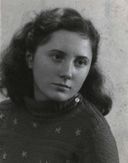  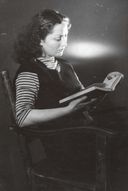  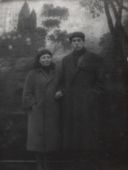 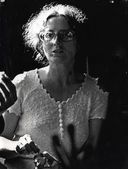  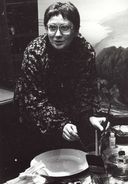 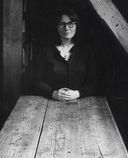    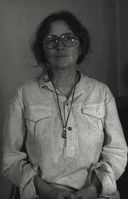    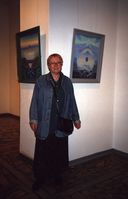  Inne materiały 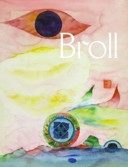 ![Urszula Broll. Wystawa retrospektywna, 2005 [link do zbioru materiałów o Urszuli Broll w Jeleniogórskiej Bibliotece Cyfrowej]. Urszula Broll. Wystawa retrospektywna, 2005 [link do zbioru materiałów o Urszuli Broll w Jeleniogórskiej Bibliotece Cyfrowej].](broll_jbc_m.jpg) Filmy ![Wernisaż wystawy Urszuli Broll-Urbanowicz w BWA w Jeleniej Górze [Film], 1997. Wernisaż wystawy Urszuli Broll-Urbanowicz w BWA w Jeleniej Górze [Film], 1997.](broll_film-01_m.jpg) ![Wernisaż wystawy Urszuli Broll-Urbanowicz w BWA w Jeleniej Górze [Film], 2005. Wernisaż wystawy Urszuli Broll-Urbanowicz w BWA w Jeleniej Górze [Film], 2005.](broll_film-02_m.jpg) ![Wernisaż wystawy Urszuli Broll-Urbanowicz w BWA w Jeleniej Górze [Film], 2015. Wernisaż wystawy Urszuli Broll-Urbanowicz w BWA w Jeleniej Górze [Film], 2015.](broll_film-03_m.jpg) |
© JCIiER Książnica Karkonoska 2022 Jelenia Góra |